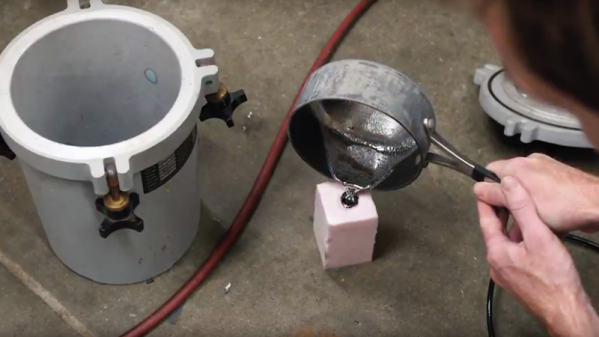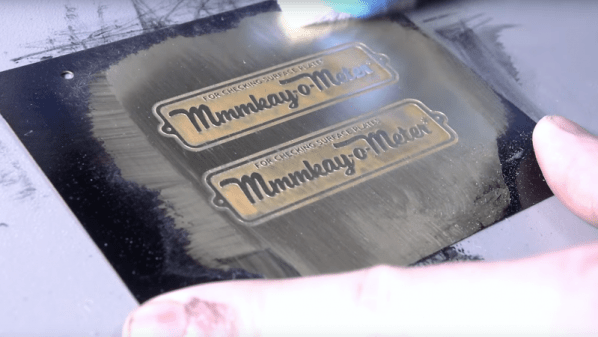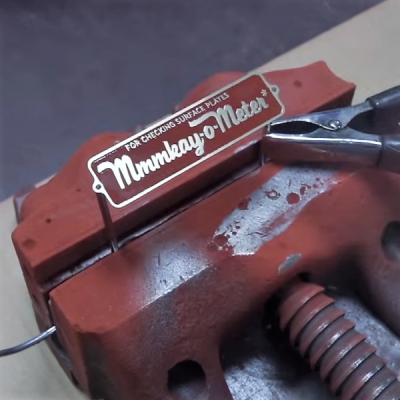Casting metal parts from 3D-printed plastic or Styrofoam models is all the rage these days, and for good reason — casting is a way to turn one-offs into mass-produced parts. Seems like most of the metal casting projects we feature are aluminum in sand molds, though, so it’s refreshing to see a casting project using silicone molds to cast low-melting point metals.
Don’t get us wrong — sand-cast aluminum is a great method that can even be used to build a lathe from scratch. But not everyone wants to build a foundry and learn the sometimes fussy craft of creating sand molds. [Chris Deprisco] wanted to explore low-melting point bismuth alloys and set about making silicone rubber molds of a 3D-printed Maltese falcon. The bismuth-tin alloy, sold as a substitute for casting lead fishing weights, melts on at 281°F (138°C) and is cool enough for the mold to handle. Initial problems with bubbles in the cast led to a pressure vessel fix, and a dull, grainy surface was fixed by warming the mold before the pour. And unlike sand molds, silicone molds are reusable.
Of course if aluminum is still your material of choice, there’s no need for a complicated foundry. A tuna can, a loaf of bread, and a handful of play sand is all you need to make custom parts.
Continue reading “Silicone Molds For Stove-Top Metal Casting”






 The ‘easy’ part of this only comes if you have access to a machine shop like [John] at NYC CNC does. To be fair, the only key machine for making these plates is a laser cutter, and even a guy like [John] needed to farm that out. The process is very straightforward — a brass plate is cleaned and coated with lacquer, which is then removed by the laser in the areas that are to be etched. The plate is dipped in an electrolyte solution for etching, cleaned, and powder coated. After curing the powder coat with a heat gun rather than an oven — a tip worth the price of admission by itself — the paint is sanded off the raised areas, the metal is polished, and a clear coat applied to protect the badge.
The ‘easy’ part of this only comes if you have access to a machine shop like [John] at NYC CNC does. To be fair, the only key machine for making these plates is a laser cutter, and even a guy like [John] needed to farm that out. The process is very straightforward — a brass plate is cleaned and coated with lacquer, which is then removed by the laser in the areas that are to be etched. The plate is dipped in an electrolyte solution for etching, cleaned, and powder coated. After curing the powder coat with a heat gun rather than an oven — a tip worth the price of admission by itself — the paint is sanded off the raised areas, the metal is polished, and a clear coat applied to protect the badge.










